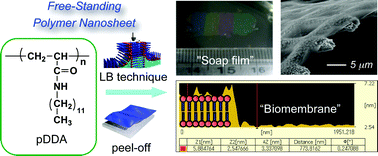Free-standing ultrathin films with universal thickness from nanometer to micrometer by polymer nanosheet assembly
Abstract
Fabrication of smooth and flexible free-standing films with universal thickness and a highly ordered layer structure is described in this paper.


 Please wait while we load your content...
Please wait while we load your content...